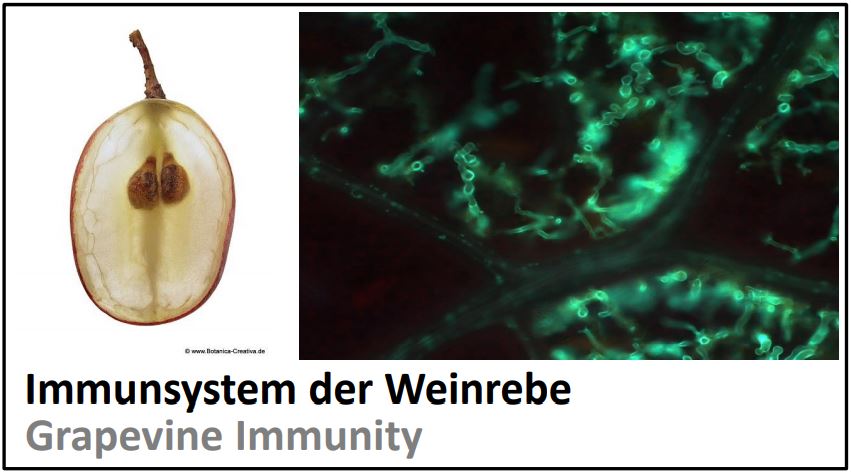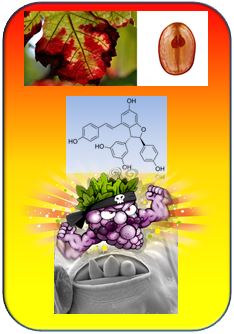Immunity of Grapevine
What is the topic?
Grapevine is among the crop plants with the highest cash yield per area. However, grapevine is also among the crop plants with the highest need for chemical plant protection. For instance, some 70 % of fungicides in Europe are used for viticulture. Most of these pathogens, such as the Downy Mildew of Grapevine (Plasmopara viticola), have evolved together with wild Vines in North America that apparently cope quite well with these pathogens. Thus, evolution has already developed a solution. In fact, one century of laborious breeding allowed to introduced these resistance factors into cultivated grapevine and simultaneously get rid of the unpalatable "foxy tone" of these American grapes. These resistant grapes have turned into a central pillar of ecological viticulture in Germany and meanwhile also have become economically successful. But nature does not halt: since more than ten years, new pathogen strains have been observed that are able to break the resistance of these new grape varieties or even prefer to grow on those grapes. At the same time climate change brings the spread of new diseases such as the hideous Esca Syndrome that can attack many years after infection and bring a grape plant to die within a few days. Thus, we need new strategies and this definitely earlier than in 100 years. To develop such novel approaches, we first have to understand, how immunity works in grapevine. Using molecular and cellular methods we have arrived at the conclusion that chemical signals exchanged between host and pathogen, play a key role.
Exploit novel sources of plant defence
Plant immunity is composed of two levels - an evolutionary ancient basal immunity is overlayed by a specialised immunity. This specialised immunity is very efficient and has developed from a long evolutionary race of arms between host and pathogen. The diseases relevant for viticulture using the cultivated grape originating in Europe had been introduced only in the middle of the 19. century. 150 years are too short to evolve a specialised immunity. The current resistant grape varieties are therefore based on genetic factors from North American wild grapes that allow to activate the specialised immunity. But several pathogens have already developed strategies to switch off this specialised immunity by means of chemical signals, so called effectors. We think that humans have no chance to win this chemical race of arms. We therefore chose a different path: when grapevine was domesticated around 8000 years in Georgia and from there spread over the entire Mediterranean region, the biased selection for large and sweet berries went on cost of the basal immunity that, although not completely eliminated, was strongly weakened. Central element of this basal immunity is the synthesis of (by the way also medically valuable) defence compounds, so called stilbenes. The wild ancestors of our cultivated grapes (Vitis vinifera), the almost extinct European Wild Grape (Vitis sylvestris) produce these stilbenes much faster and stronger. We have discovered this by the Wild Grape Collection built up in the Botanical Garden of the KIT. In one of our "champions", the wild grape Hö29, we even were able to identify the reason for this improved basal immunity: the wild grape harbours a stretch in the control sequence of a gene switch (MYB14) that apparently had been lost during domestication some thousands of years ago. In the meantime, we were able to show that this stretch in fact can strongly promote the activation of this switch. This switch, in turn, activates stilbene synthase, the key enzyme for the production of defence compounds.


